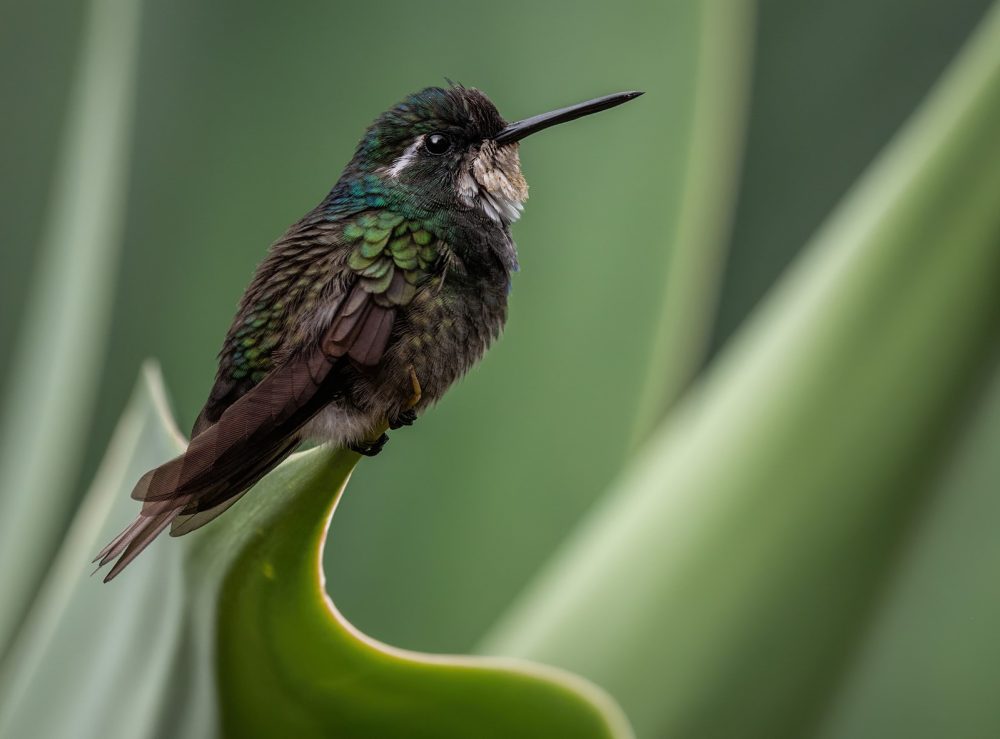On 11th April we were delighted to have 3 international speakers who joined us from Sweden and the Netherlands.
First up was Denise van der Boom who provided a bird’s eye view using drones to capture images from the sky. Denise has a very practical reason for favouring drone photography due to mobility issues. The drones do provide a great tool for getting compositions and locations that just would not work on foot. Members might recall Eddie Telford telling us back in February than he often waded into a river to get best shots. Denise gets similar shots without getting wet by hovering her drone over the water. The legalities of drone flight were mentioned (similar to UK rules) along with a brief comparison of a few different models. The small size and low weight of the DJI mini 4 meant that it could be taken on holidays as well as providing that unusual bird’s eye view of her homeland. While the novelty of the different views afforded by drones is interesting, there is still the need for a good composition. Abstract images of tulip fields full of coloured strips of flowers to the astonishing aqueduct that confused the senses, rainbows in agricultural watering systems and fine historic buildings all benefitted from the unusual viewpoint. Denise’s work can be seen at https://www.flickr.com/photos/denisevanderboom/
Hans van der Boom followed with a great 10 tips for “Photographing flowers in soft focus” using his own shots to illustrate his points (some of which may be found at https://www.flickr.com/photos/hansvanderboom/).
- Use a Macro lens or adapters
- Accessorise – mat to lie on, lights, plamps, clothes pegs, crinkled tin foil and, surprisingly, dog poo bags – the packs with various colours!
- Use a BIG aperture, you don’t want all of the detail of a pin sharp image.
- Make use of “out of focus” areas, to simplify your image.
- Know your subject – go out with certain “in season” flowers in mind. An online Flowering Calendar could give an idea about what flowers might be currently available.
- Pay attention to composition and space within the image. Using a low viewpoint (using a bean bag, or even a polystyrene bean bag for weight reduction) can keep the image simpler. The space around the subject is out of focus and this minimises clutter. Less is more!
- Use of Light, avoiding harsh light and dark shadows. The use of a white umbrella can be used to diffuse light
- Experiment – Christmas lights (battery operated LEDs) in front of or behind the subject. Use crinkled aluminium foil or glitter boards. Use a plant mister for a few dew drops. Place anything in the out of focus areas to simplify them. Reflectors can also be useful.
- Bokeh and light bubbles are easier to achieve when shooting low to high.
- Post Processing – add a little brightness and saturation, combine techniques. Moderation makes the master.
Hans also suggested shooting in raw and keeping ISO low to minimise digital noise. He also suggested that double or multiple exposure could be useful. Attaching the coloured dog poo bags, or sandwich bags etc to the lens hood with a clothes peg is a good way to fill the out of focus areas. Hans suggested that folks should look at the work of Bob Daalder for some inspiration.
https://www.instagram.com/bobdaalder/
https://4tinyhands.com/macro-photography-with-bob-daalder/
The evening was brought to a close by Helen Lunden, who many know from her time in Scotland and who is now a member of Mölnlycke Fotoklubb, Gothenburg, Sweden. Helen presented her work on images produced using Intentional Camera Movement (ICM). This was sparked by her attendance at a course in Dumfries and Galloway run by Morag Paterson and Ted Leeming. Helen covered the Why and How of ICM along with what equipment was needed along with examples and inspiration. The equipment used does not have to be special, in fact because the finished result is rarely pin sharp, older or less sophisticated kit can work out fine. Helen often uses an older Olympus EM10 and a mixture of lenses and ND filters.
How? Move the camera during the (long) exposure. An exposure of 1/8th of a second is often enough, and Neutral Density filters can help here. The camera is moved horizontally, vertically, spun, etc. You won’t know what you will get until the photo is taken. Multiple exposure can add to the finished result with perhaps multiple ICM images or 1 ICM image and a sharp image combined. Helen prefers to achieve the result in-camera with only subtle increase in contrast and saturation carried out afterwards. Her method is to “take lots of shots and delete what you don’t like”. While vertical movements are often used for trees and horizontal for landscapes, you can always add in other movements or shapes. An advantage of the technique is that it can work indoors or out, in pretty much any lighting conditions and even macro can be effective. People photos can provide a ghostly effect.
Helen’s recent projects include The Swedish West Coast (ghostly images), Dark & Light (quite moody) and Light & Harmony (quite fresh). It is very interesting to see things in the final images that have been introduced by the working method, the results can be striking. Helen was keen to encourage more photographers to have a go at ICM to see what they could produce. Helen Lunden’s images are on show at…
https://helunhelun7.wixsite.com/helensfoto
and she talked about the work of several other photographers who champion ICM images including…
along with the ICM PhotoMag Network run by
The ICM PhotoMag can be found on Facebook: https://www.facebook.com/ICMPhotoMag/
An interesting international evening highlighting aspects of photography that are not often discussed at Fisherrow.
- This Thursday (18th April 2024) we will be having a “Studio Lighting Fun Workshop” at the Fisherrow Centre at our usual time of 7pm. Bring your camera or phone and come along to experiment and have fun.

